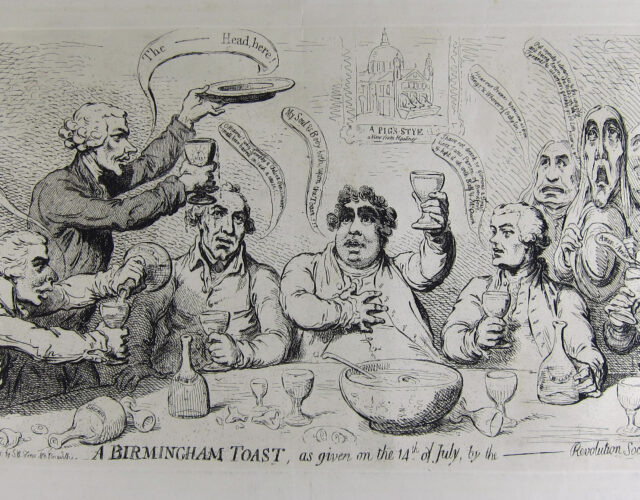On 14 July 1791 in Birmingham, England, anger at supporters of the French Revolution sent a mob into a four-day frenzy often referred to as the Priestley Riots—so named for the most prominent target of local anger: Joseph Priestley.
Priestley, a discoverer of oxygen, is now remembered as one of the era’s most prolific scientific minds and as a controversial figure during his life. Like many of his fellow Dissenters from the established Church of England, Priestley fervently supported the goals of the Enlightenment. But for locals already suspicious of the group’s religious and reformist leanings, Priestley’s public support of the French Revolution at a time of conservative backlash proved to be the final straw.
The riots began in response to a dinner held to celebrate the second anniversary of Bastille Day, the French equivalent of the U.S.’s Independence Day. Priestley was not in attendance, yet his known allegiance toward this and other then-radical movements made him a target of the mob’s wrath. After assaulting dinner attendees, rioters stormed the church where Priestley served as minister and burned the chapel. Soon—after burning other Dissenting churches along the way—they arrived at Priestley’s home and set it and his laboratory afire, destroying them entirely.
Over the next three days twenty-six other Dissenters’ homes and three more churches were ransacked and burned to the ground. The government, which considered Priestley and his supporters to be political agitators, was slow to respond, and the riots did not cease until military intervention on 17 July.
British political caricaturist James Gillray published A Birmingham toast, as given on the 14th of July less than a week after the riots ended. Gillray opposed the French Revolution and mocked Priestley in the etching. Priestley is seen presiding over the toast with a full goblet, offering an empty communion plate and calling for a head—implied to be the king’s—among well known Liberals and grim Dissenters holding court in a harsh parody of the iconic Last Supper.
Such critical depictions of Priestley were not new, and post-riot assassinations of Priestley’s character in the public forum continued. Soon after, Priestley and his family fled to Hackney, where they lived for three years before relocating permanently to the United States.




